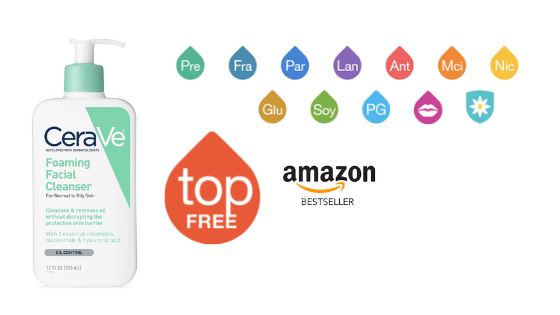Acne isn’t fun at any age. I remember dabbing skin tinted Clearasil all over my face to cover newly sprouted pimples. My brother used a sun lamp to help clear up his skin (as if living in Southern California didn’t expose us to enough UV rays.)
Luckily, science has progressed in the treatment for acne and blue light therapy has been successfully used to treat certain types of acne such as moderate or inflammatory acne vulgaris.
How it works:
Blue light works by killing P. acnes, a strain of bacteria that contributes to acne, on the surface of the skin. There are no harmful UV waves emitted with blue light. Studies have shown that many patients obtain noticeable improvements, 55-65% depending on the type of acne they have from regular treatments with blue light. In one study from Taiwan, 31 patients with inflammatory acne vulgaris who received blue light treatments on only one side of their face showed improvement while patients who had more severe nodulocystic acne actually became worse.
The FDA approved the use of blue light devices in 2002 and dermatologists began offering blue-light therapy treatments in their offices. Treatment must be done in increments so typically a patient has two 15 minute sessions a week for four to eight weeks. Side effects of blue light therapy in general are minimal such as: transient redness, mild swelling or dryness.
In some cases, a photosensitive solution called Levulan is applied to the skin 15-60 minutes before exposure to blue light to make the skin more sensitive to the light. When using this topical enhancer, it is very important that the person does not expose themselves to excess amounts of light for the next 48 hours due to risk of burning and peeling.
Blue light therapy in a doctor’s offices is expensive, about $100-$200 a treatment and it may not be covered by insurance. Blue light treatments are now however, available as home units and do not need to be used with topical medication to enhance their use. In addition, some phototherapy devices also emit red light along with blue light, which is thought to contribute to collagen formation and repair as well as combating P. acnes.
Home blue light lamps can also be expensive and start at about $200 and up. One blue light lamp, I saw on Amazon was $200 and 15 of the 16 people who purchased it felt very pleased with the lamp. One mother had taken her daughter for treatments in a dermatologist office costing $3,000 and was thrilled when the Amazon blue light worked so well for her 16 year old daughter that she could continue treatments at home.
Blue and red light are just the start of light therapy research being done to assist in the treatment of acne. Studies are in also in progress on green and yellow light. Laser treatments are also an alternative which acts to shrink or destroy over active sebaceous glands contributing to acne formation.
As an adult, I still pull out the Clearasil for my occasional outbreaks but blue light therapy sounds a whole lot safer than my brother’s sun lamp for today’s treatment of uncomplicated acne.
Sources:
www.skincarephysicians.com/acnenet/article_lasers.html
www.medscape.com/viewarticle/572288_4
www.bidmc.org/YourHealth/HolisticHealth/Medications.aspx?ChunkID=24992
www.ehow.com/way_5290443_laser-treatment-cases-severe-acne.html
http://thedermblog.com/2009/05/31/blue-light-therapy-for-acne-is-it-worth-it/
Michele is an R.N. freelance writer with a special interest in women’s healthcare and quality of care issues. Other articles by Michele can be read at http://www.helium.com/users/487540/show_articles





Add a CommentComments
There are no comments yet. Be the first one and get the conversation started!